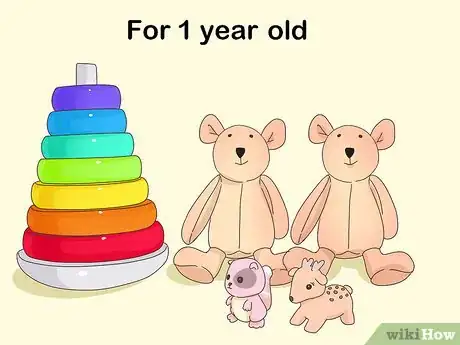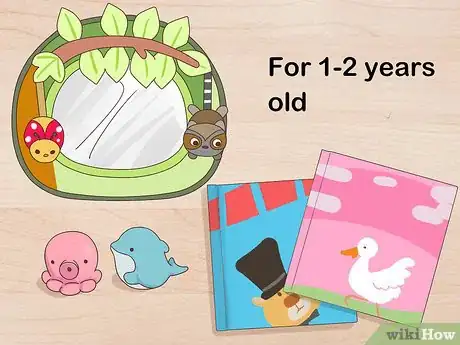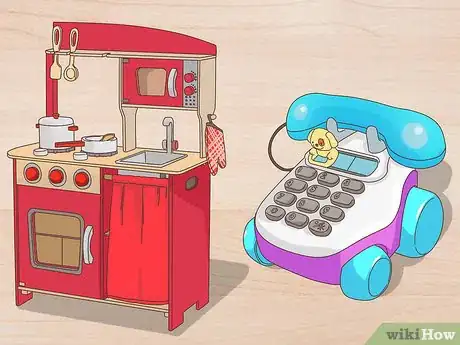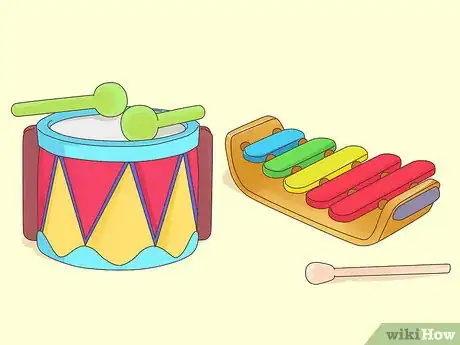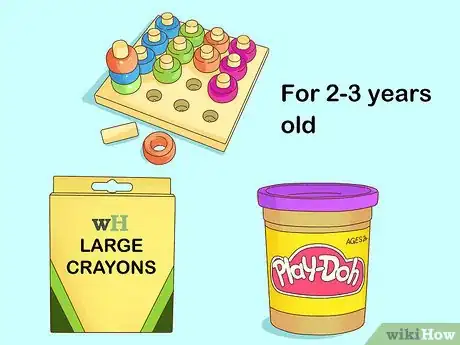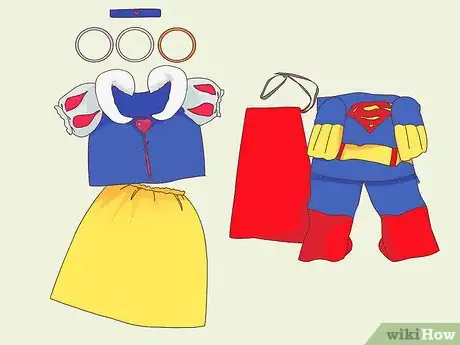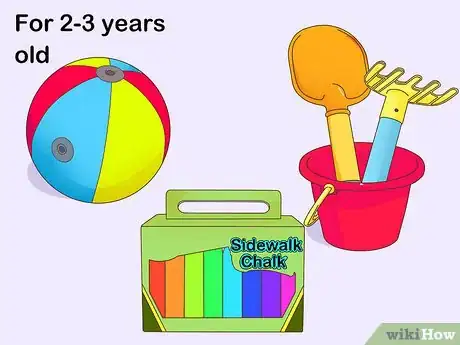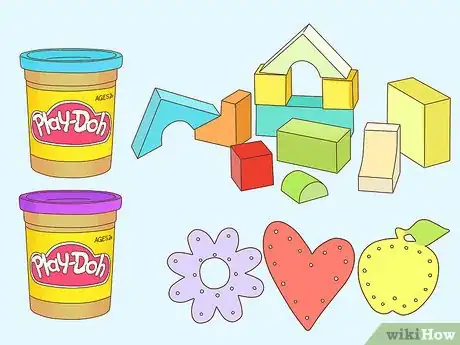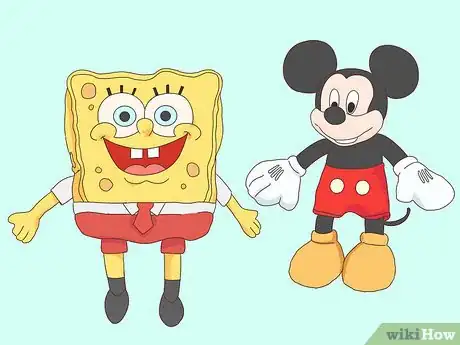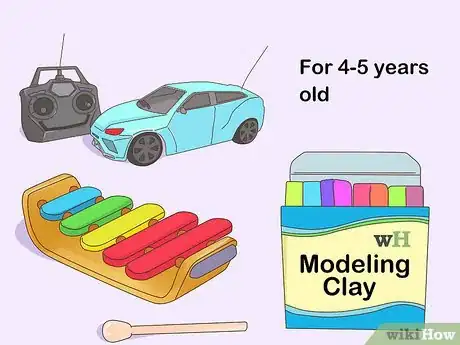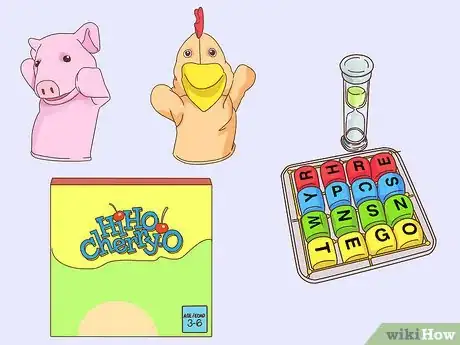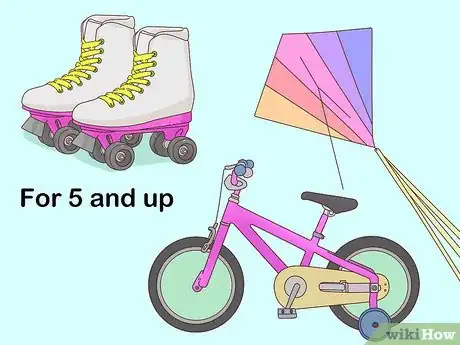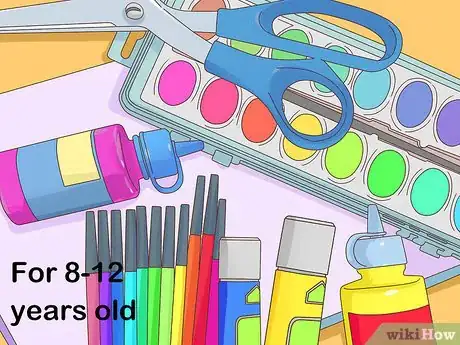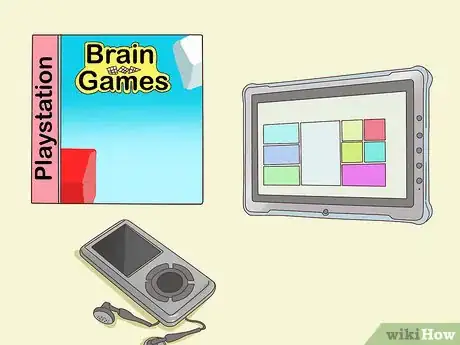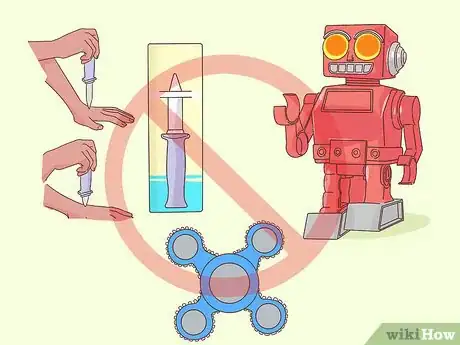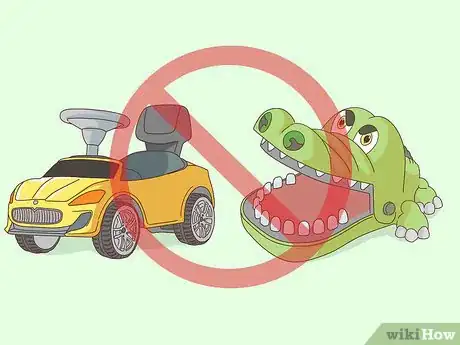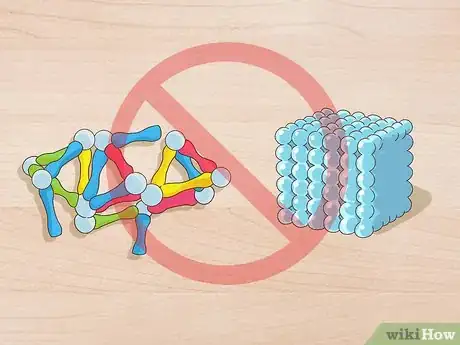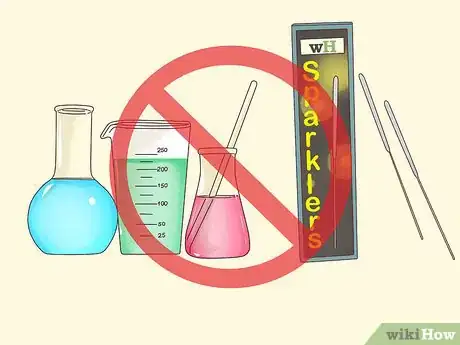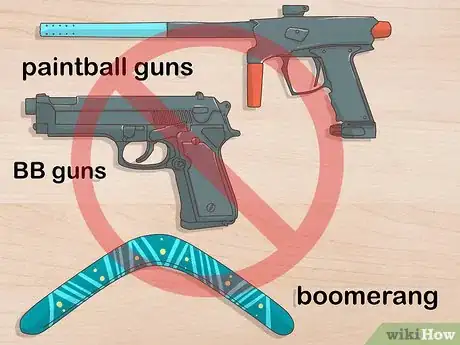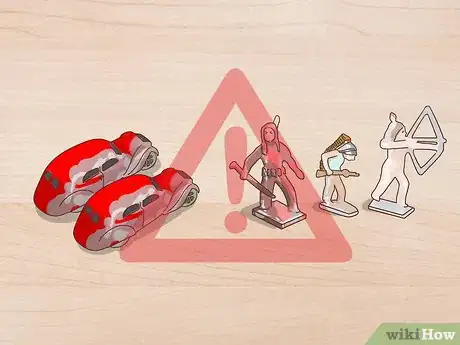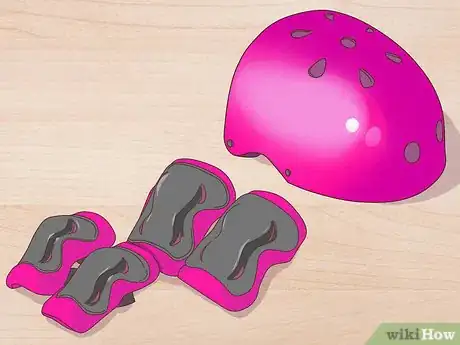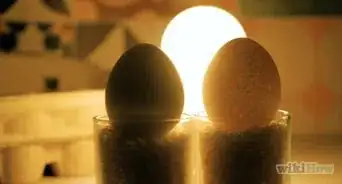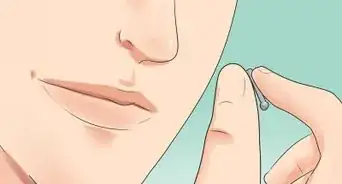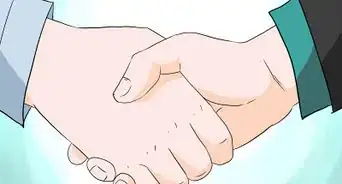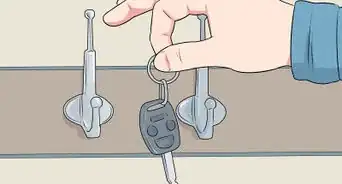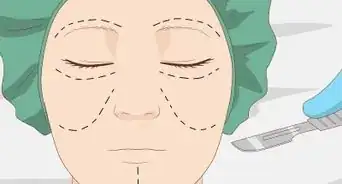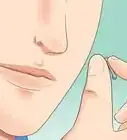This article was co-authored by Andrea Rudominer, MD, MPH and by wikiHow staff writer, Amy Bobinger. Dr. Andrea Rudominer is a board certified Pediatrician and Integrative Medicine Doctor based in the San Francisco Bay Area. Dr. Rudominer has over 15 years of medical care experience and specializes in preventive health care, obesity, adolescent care, ADHD, and culturally competent care. Dr. Rudominer received her MD from the University of California, Davis, and completed a residency at the Lucile Packard Children's Hospital at Stanford University. Dr. Rudominer also has an MPH in Maternal Child Health from the University of California, Berkeley. She is a Member of the American Board of Pediatrics, a Fellow of the American Academy of Pediatrics, a Member and Delegate of the California Medical Association, and a Member of the Santa Clara County Medical Association.
There are 10 references cited in this article, which can be found at the bottom of the page.
This article has been viewed 50,235 times.
Choosing toys for children might seem simple, but there are a lot of factors to take into consideration. It’s important to think about durability, pricing, safety, educational value, and, of course, fun! Choose plush toys and rattles for babies and musical instruments, stacking toys, and outdoor fun for toddlers. For preschool-aged children, select dress-up clothes, blocks, crayons, and books. Older children will enjoy kites, bicycles, puzzles, and board games.
Steps
Picking Toys for Babies and Toddlers
-
1Choose stimulating objects for babies up to 1-year-old. Look for toys that will engage developing senses, such as toys with bright colors, simple patterns, different textures, and squeaking or rattling noises. Plush toys with embroidered eyes, large stacking rings, rattles, and toys that allow babies to press buttons or sort shapes are all popular options.[1]
- Babies and toddlers put everything in their mouths, so avoid any toys that have small parts or pieces that can fall off, as well as paint that can chip off.[2]
-
2Select tactile toys for children between 1 and 2 years old. At this age, children are learning to explore their world. Choose brightly illustrated books made of pasteboard or cloth, bathtub toys, unbreakable mirrors, or anything that makes noise.
-
3Choose toys that will allow babies to mimic the activities they see around them. Dolls, pretend kitchens, workbenches, and toy phones and tablets are always a hit!
-
4Look for musical instruments. Babies love to make noise, and playing instruments helps children learn cause and effect as well as develops their love of music. You can find simple musical instruments like drums, kazoos, xylophones, and keyboards at any toy store. Get down on the floor and show them how it works, and they'll be making beautiful music before you know it.[3]
-
5Try interactive indoor toys for children that are 2 to 3 years of age. Allow kids to get hands-on and stimulate their imagination with toys like play dough, large crayons, a pegboard with big pieces, brightly colored books with music, or a dollhouse. These are especially great options for a rainy day.[4]
-
6Buy dress-up clothes. Toddlers love to play pretend. Look for clothes that will allow them to dress up as their favorite superhero, princess, or TV character. You can also think of different professions to help you come up with outfits, including police officers, astronauts, chefs, or nurses.
-
7Look for outdoor toys for children ages 2-3. It's never too early to encourage an active lifestyle. Sandbox toys, sidewalk chalk, sturdy cars and wagons, balls, bubbles, and sprinkler toys are all fun options.
Selecting Toys for Preschool-Aged Children
-
1Pick toys that encourage artistic expression. Allow children to get creative with building blocks and interlocking plastic blocks, play dough, blunt scissors, large non-toxic markers and crayons, finger paints, and sewing cards.
-
2Choose toys that connect children to the world around them. Look for toys that represent characters your children are familiar with, like an action figure with their favorite superhero or a plush toy from their favorite cartoon.
-
3Look for skill-building toys for 4 to 5-year-old children. Kids this age enjoy playing with modeling clay, battery-operated toys, stencils, simple children's musical instruments, books, and 9-24 piece jigsaw puzzles.[5]
-
4Choose toys that can be shared with friends. Social development is very important between the ages of 3 and 5, so look for a card and board games, puppets, construction toys, and other toys that kids can play with together. Encourage children to have playdates and to share their toys. [6]
Selecting Toys for Grade School-Aged Children
-
1Pick toys that promote activity in kids ages five and up. Choose roller skates, children's cameras, sleds, kites, painting and drawing utensils, sewing materials, and uncomplicated tools sets. A bicycle is another great way to get kids outside and playing - depending on the size of the child, the wheels should be 24 or 26 inches (61 or 66 cm).[7]
- For older kids, look for toys that will get them involved in their environment. Try remote-controlled cars, drones, sidewalk chalk, science experiments, spy kits, telescopes, or anything else that will create memories.
-
2Buy toys that emphasize interaction in older children. Interactive games like jigsaw puzzles, board games, and dominoes allow bigger kids to play together.
-
3Choose hobby-helping toys for children between 8 and 12 years old. Select toys that coincide with a child’s interests, such as arts and crafts materials, construction sets, electrical trains, models they can build themselves, musical instruments, or sports equipment. [8]
-
4Introduce kids to technology. As technology takes on a more important role in the future, children are exposed to digital media earlier and earlier. Look for educational video games, durable tablets, or mp3 players that you can easily control. [9]
- To protect your children and keep them from spending too much time on their new device, set rules (and stick to them!) about screen time, learn how to configure the parental controls, and monitor your child's online activity daily.
Choosing Safe Toys
-
1Watch choking hazards. Babies like to put things in their mouths, so stay away from toys with detachable small parts and glass or button eyes, which can come loose and become lodged in the throat.
-
2Avoid sharp edges. Children are apt to run with their toys, and anything sharp can cause deep lacerations if they take a tumble.
-
3Don't give children heavy toys. Children often overestimate their ability to pick up heavy or large objects. Dropping something heavy on themselves can cause serious injury, including broken bones.
-
4Stay away from toys with small magnets. Even strong magnets can be pulled apart and swallowed. This can pose a choking hazard and can even lead to digestive tract injuries leading to surgery.[10]
-
5Skip the explosives. Children should not be given anything which might ignite, including fireworks or chemistry sets. Even under supervision, these can create a dangerous situation that could get out of hand quickly.
-
6Don't buy weapons for children. Even if they seem harmless, children can be seriously injured by BB guns, air rifles, darts, arrows, boomerangs, and paintball guns.
-
7Check for lead paint and other toxic materials. Regulations today restrict the use of these dangerous materials in children's toys, but this hasn't always been the case, so it's especially important to research vintage toys before you give them to children.[11]
- If you're buying plastic toys, check to make sure they're BPA-free since children often put their toys in their mouths.[12]
-
8Buy protective gear. If you give your child a tricycle or bicycle, remember to buy protective gear, such as helmets and knee and elbow pads.
Expert Q&A
-
QuestionHow can I be sure a toy is safe for a baby or toddler?
 Andrea Rudominer, MD, MPHDr. Andrea Rudominer is a board certified Pediatrician and Integrative Medicine Doctor based in the San Francisco Bay Area. Dr. Rudominer has over 15 years of medical care experience and specializes in preventive health care, obesity, adolescent care, ADHD, and culturally competent care. Dr. Rudominer received her MD from the University of California, Davis, and completed a residency at the Lucile Packard Children's Hospital at Stanford University. Dr. Rudominer also has an MPH in Maternal Child Health from the University of California, Berkeley. She is a Member of the American Board of Pediatrics, a Fellow of the American Academy of Pediatrics, a Member and Delegate of the California Medical Association, and a Member of the Santa Clara County Medical Association.
Andrea Rudominer, MD, MPHDr. Andrea Rudominer is a board certified Pediatrician and Integrative Medicine Doctor based in the San Francisco Bay Area. Dr. Rudominer has over 15 years of medical care experience and specializes in preventive health care, obesity, adolescent care, ADHD, and culturally competent care. Dr. Rudominer received her MD from the University of California, Davis, and completed a residency at the Lucile Packard Children's Hospital at Stanford University. Dr. Rudominer also has an MPH in Maternal Child Health from the University of California, Berkeley. She is a Member of the American Board of Pediatrics, a Fellow of the American Academy of Pediatrics, a Member and Delegate of the California Medical Association, and a Member of the Santa Clara County Medical Association.
Board Certified Pediatrician & Integrative Medicine Doctor Babies and toddlers explore their world by putting everything in their mouths. Buy toys made of organic or BPA-free plastics, and avoid any toys that have paint that can chip off, especially if it may be tainted with lead. Also, watch out for any small parts or pieces that can fall off or be bitten off, which can cause a choking risk.
Babies and toddlers explore their world by putting everything in their mouths. Buy toys made of organic or BPA-free plastics, and avoid any toys that have paint that can chip off, especially if it may be tainted with lead. Also, watch out for any small parts or pieces that can fall off or be bitten off, which can cause a choking risk.
References
- ↑ http://www.parents.com/holiday/christmas/gifts/best-gifts-for-one-year-olds/
- ↑ Andrea Rudominer, MD, MPH. Board Certified Pediatrician & Integrative Medicine Doctor. Expert Interview. 6 May 2020.
- ↑ http://www.parentingscience.com/music-and-intelligence.html
- ↑ http://www.parents.com/holiday/christmas/gifts/best-gifts-for-three-year-olds/
- ↑ http://www.parents.com/toddlers-preschoolers/development/growth/fourth-birthday-gift-ideas/
- ↑ http://www.scholastic.com/parents/resources/article/social-development-3-5-year-olds
- ↑ http://www.goodhousekeeping.com/childrens-products/toy-reviews/g1982/active-toys-kids/?
- ↑ https://www.todaysparent.com/family/best-toys-for-big-kids/
- ↑ https://www.mayoclinic.org/healthy-lifestyle/childrens-health/in-depth/screen-time/art-20047952?pg=2
- ↑ https://www.livescience.com/45671-magnets-dangerous-children-ingestion-injuries.html
- ↑ Andrea Rudominer, MD, MPH. Board Certified Pediatrician & Integrative Medicine Doctor. Expert Interview. 6 May 2020.
- ↑ Andrea Rudominer, MD, MPH. Board Certified Pediatrician & Integrative Medicine Doctor. Expert Interview. 6 May 2020.
